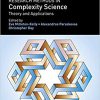(eBook PDF) Real Estate Markets: An Introduction
$50.00 Original price was: $50.00.$35.00Current price is: $35.00.
(eBook PDF) Real Estate Markets: An Introduction – Instant Download
(eBook PDF) Real Estate Markets: An Introduction – Digital Ebook – Instant Delivery Download

product details:
- ISBN-10 : 1690805005
- ISBN-13 : 978-1690805007
- Author: Dr. Murtaza Haider
This book serves as an introduction to the dynamic world of real estate markets.Despite the widespread interest in real estate among borrowers, lenders, and regulators, there are hardly any books available that could inform the decision-making of those involved or interested in real estate markets. The specialized knowledge, restricted to academic journals and professional publications, is often beyond the reach of those who need it the most. The academic literature in urban economics is rich in housing and real estate market research, yet the prevalence of jargon and overzealous use of calculus and econometrics restricts the reach of such knowledge and deprives it of a broader readership. Hence, access to specialized knowledge in real estate suffers from scarcity.This book addresses the accessibility gap to specialized knowledge in real estate markets. The book draws heavily from the academic literature and data and translates the specialized knowledge so that it is accessible to students, real estate practitioners, and public-sector policymakers. Consider that this book does not expect readers to know that “rent-seeking” in economics does not refer to a landlord seeking rents from tenants but refers to an entity that is trying to profit without contributing to productivity.The other key distinguishing features of this book are that it is topical and issues-oriented. Topics and issues addressed in this book relate to the current challenges facing real estate markets. Furthermore, the book focuses on the ongoing debates in real estate markets and tries to answer the questions being posed to businesses and policymakers. For instance, does rent control improve or worsen the long-term welfare of renters? The coverage of rent control in the popular press often suggests that such measures are necessary to secure shelter for low-income households. However, a preponderance of evidence suggests otherwise. Hence, the narrative in this book is framed around current issues and supported by empirical evidence.An indication of the book’s currency is a detailed chapter that focusses on how pandemics, especially COVID-19, affect real estate markets. Another distinguishing feature of this book is that it is unapologetically Canadian. The data, case studies, empirical evidence, and the narrative focuses mostly on Canadian real estate markets.
table of contents:
PART A: INTRODUCTION
1. Market Analysis In Perspective
2. Real Estate Economics
PART B: METROPOLITAN GROWTH ANALYSIS
3. Metropolitan Growth Patterns
4. Analyzing Metropolitan Economies
PART C: ANALYZING RESIDENTIAL REAL ESTATE MARKETS
5. Residential Real Estate Markets
6. Macroeconomic Analysis of Residential Real Estate Markets: Accounting Techniques
7. Macroeconomic Analysis of Residential Real Estate Markets: The Basics of the Econometric Approach
8. Macroeconomic Analysis of Residential Real Estate Markets: Applying the Econometric Approach
9. Analyzing Residential Projects: A Micro Perspective
10. Analysis of Residential Real Estate Markets: An Example
PART D: ANALYZING THE MARKET FOR RETAIL SPACE
11. Retail Markets and Retail Market Studies
12. Analyzing the Market for Retail Space
13. Analyzing the Market for Retail Space: Synthesis and Market Studies
PART E: OFFICE MARKET ANALYSIS
14. The Market for Office Space
15. Office Market Analysis: A Macro Perspective
16. Micro Analysis of Office Markets
17. Office Market Analysis: Synthesis and Market Studies
PART F: INDUSTRIAL MARKET ANALYSIS
18. Industrial Space Market
PART G: DATA SOURCES
19. Data Sources for Real Estate Market Analysis


